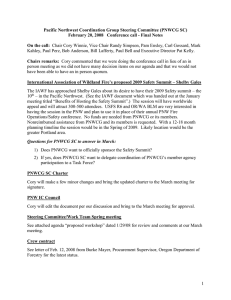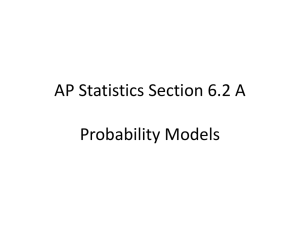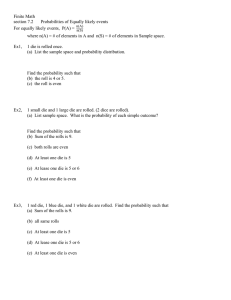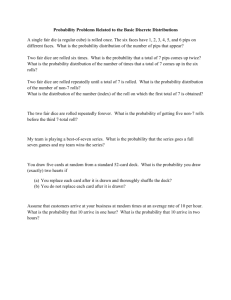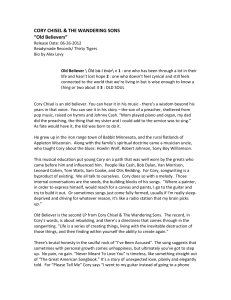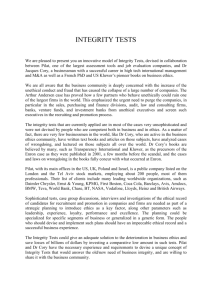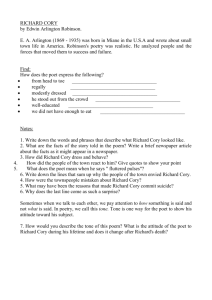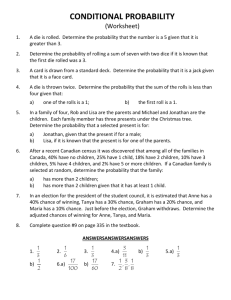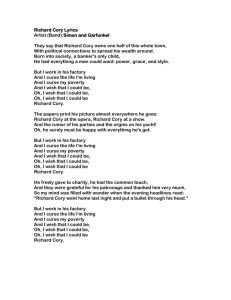probability
advertisement
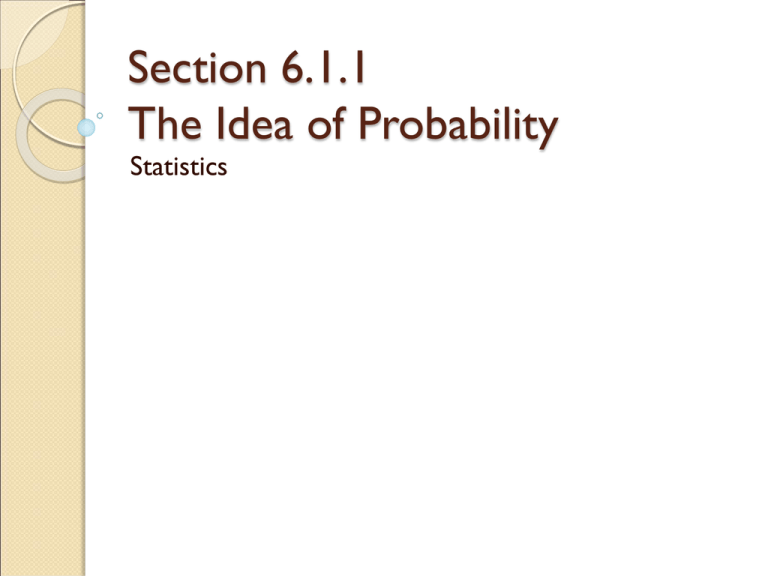
Section 6.1.1 The Idea of Probability Statistics Probability is studied… When looking at games of chance ◦ cards, dice, lotteries When looking at social science data ◦ Life, death When looking at scientific data ◦ Variations in individual measurement are random AP Statistics, Section 6.1, Part 1 2 The idea of probability To understand why we can trust random samples and randomized comparative experiments, we must look closely at chance behavior. AP Statistics, Section 6.1, Part 1 3 Random is not “haphazard” The Big Idea: “Chance behavior is unpredictable in the short run but has a regular and predictable pattern in the long run.” AP Statistics, Section 6.1, Part 1 4 Definition of Random We call a phenomenon random if individual outcomes are uncertain but there is nonetheless a regular distribution of outcomes in a large number of repetitions. AP Statistics, Section 6.1, Part 1 5 Definition of Probability The probability of any outcome of a random phenomenon is the proportion of times the outcome would occur in a very long series of repetitions. That is, probability is long-term frequency. Computer simulations can allows us to see those long-term frequencies AP Statistics, Section 6.1, Part 1 6 Independence In order for an event to be considered random, it must be independent. That is, it must not be influenced by other (perhaps previous) events. Example: ◦ Flipping a head does not make it more probable that a tail will occur next. AP Statistics, Section 6.1, Part 1 7 Simulations Cory rolls a die 30 times. How often does a number of 2 or less appear? AP Statistics, Section 6.1, Part 1 8 Create the random numbers AP Statistics, Section 6.1, Part 1 9 Categorize the results AP Statistics, Section 6.1, Part 1 10 Count the results AP Statistics, Section 6.1, Part 1 11 Consider During the last simulation, Cory “rolled” numbers two or less 11 times. (36.7%) Is this what you expected? Why wasn’t it exactly 10. What would happen if Cory “rolled” 300 times? AP Statistics, Section 6.1, Part 1 12 300 Trials With 300 “rolls”, Emil got a number less than two, 90 times (30%). What was expected? AP Statistics, Section 6.1, Part 1 13 Simulating tossing multiple coins AP Statistics, Section 6.1, Part 1 14 What about things you can’t “simulate” Spin a penny on your desk. ◦ How many times does it fall heads up? ◦ What is the probability that it fall heads up? Toss a thumbtack on a hard surface 100 times. ◦ How times did it lands point up? ◦ What is the probability that it lands point up? AP Statistics, Section 6.1, Part 1 15 Assignment Exercises: 6.1 - 6.7 AP Statistics, Section 6.1, Part 1 16


